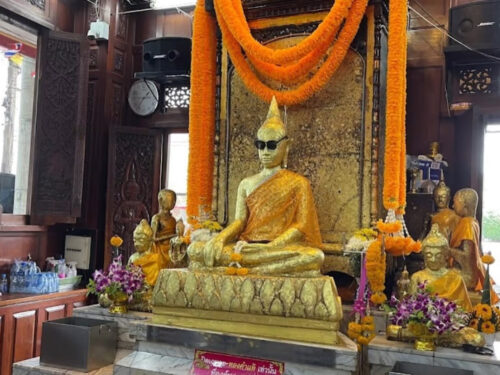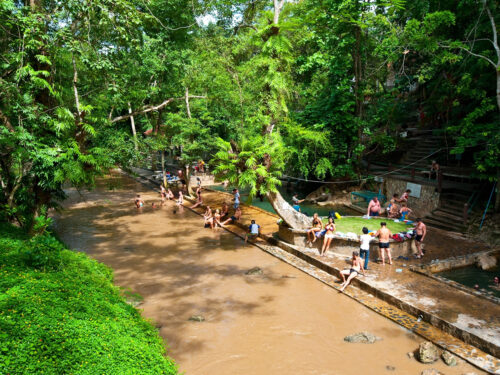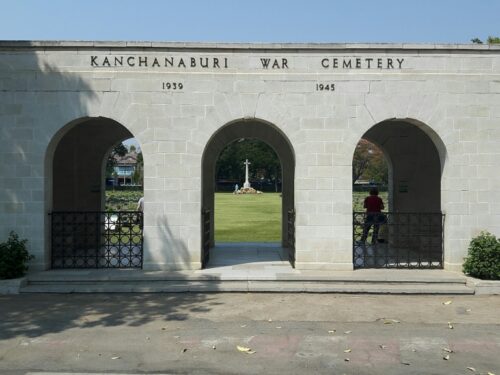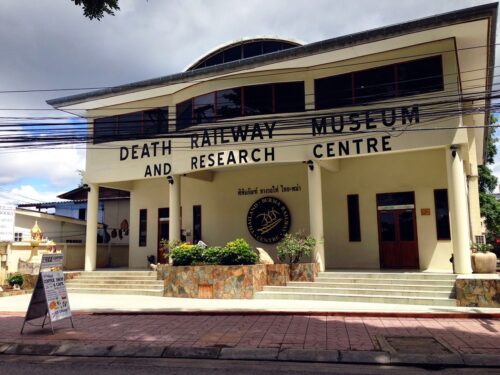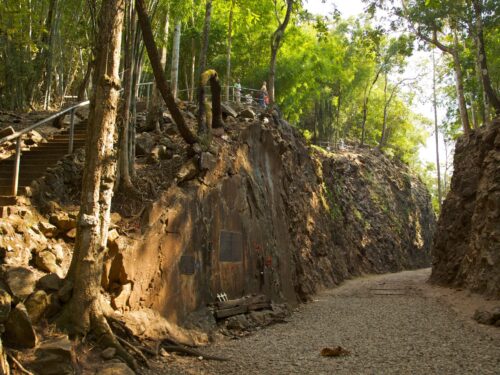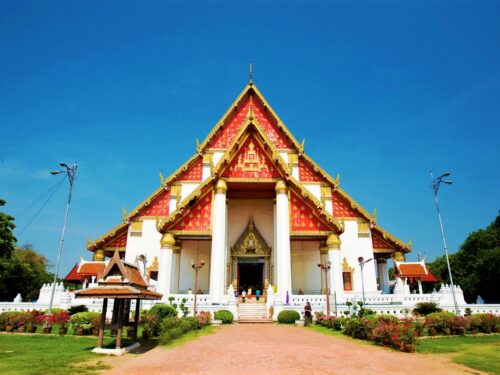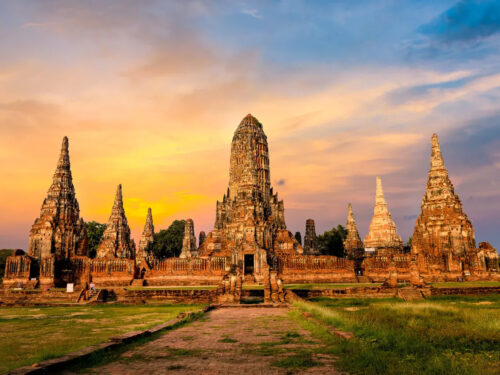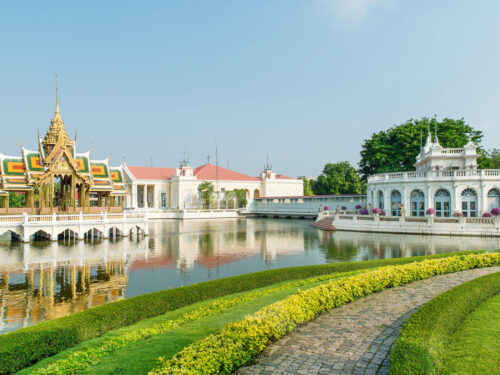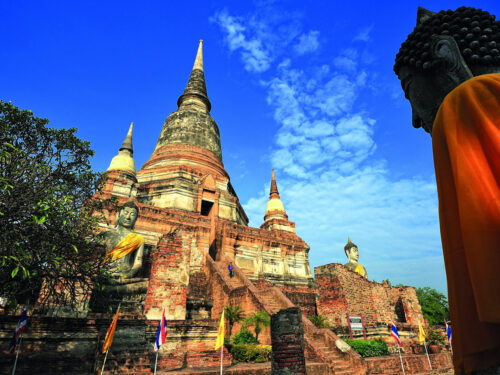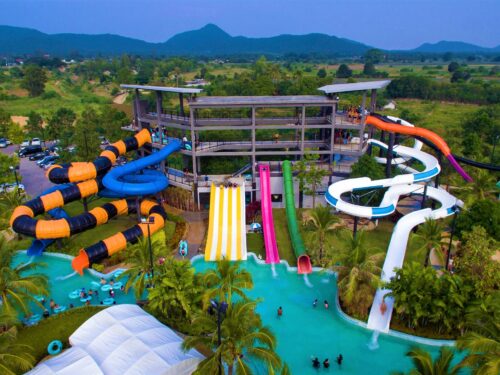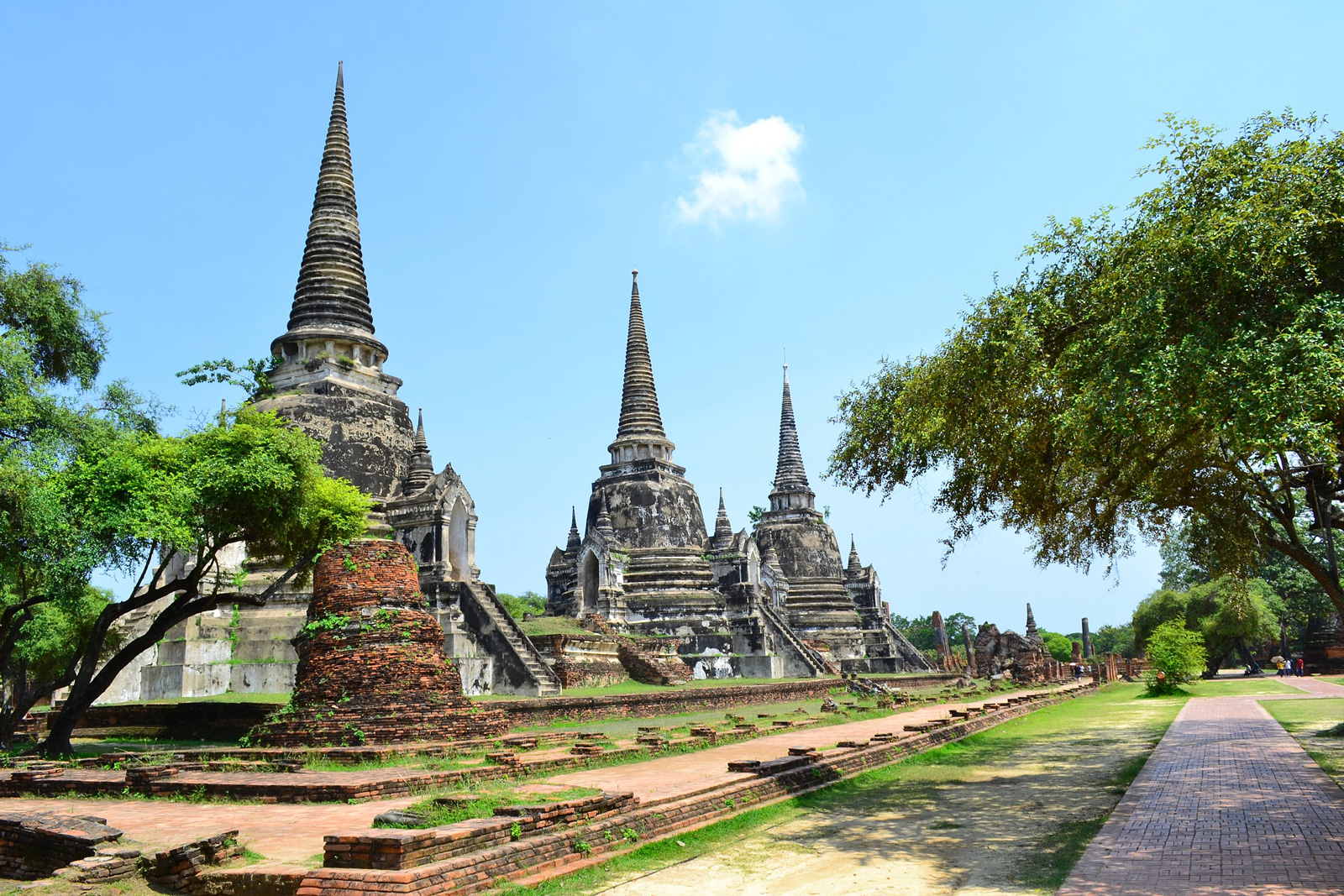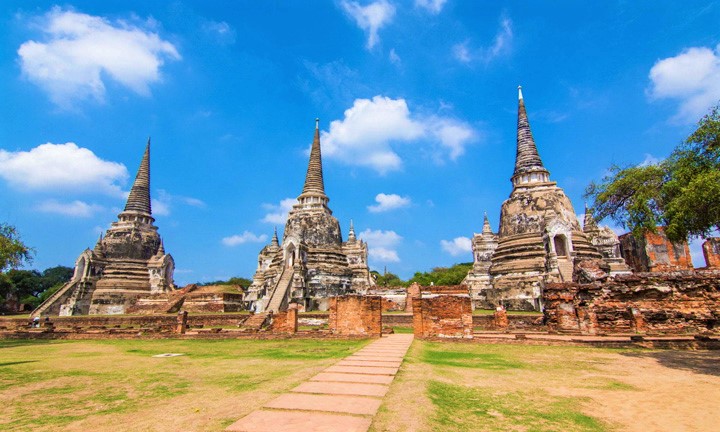Wat Phra Si Sanphet
Wat Phra Si Sanphet, renowned for its distinctive pagodas, stands as one of the most renowned landmarks in Ayutthaya. Similar to the iconic Buddha head enmeshed in tree roots at the nearby Wat Phra Mahathat, images of this historic temple grace the covers of numerous postcards and travel books found in Ayutthaya.
Wat Phra Si Sanphet was once a part of the grand palace complex of the Ayutthaya Kingdom, serving as the royal temple. Today, it stands as a captivating testament to the glory and splendor of the ancient capital.
History of Wat Phra Si Sanphet
The temple’s origins trace back to the mid-14th century when King U Thong, the first king of Ayutthaya, erected several chedis in the vicinity of the royal palace. Later, in 1448, King Borommatrailokkanat ordered the construction of a new palace, converting the old palace into a revered royal monastery.
In 1491, King Ramathibodi II added two substantial chedis to house the remains of his father and elder brother. Not long after, the king commissioned the construction of a spacious viharn, measuring 50 meters in length, to enshrine a majestic gilded Buddha image named Phra Si Sanphet. It was at this point that the temple received its present name.
Around thirty years later, during the reign of King Ramathibodi II, a third chedi was built to hold the king’s remains. During the reign of King Narai in the latter part of the 17th century, a grand viharn called Prasat Phra Narai, shaped like a cross, was constructed directly west of the central platform supporting the three stupas.
Sadly, in 1767, the Burmese armies invaded Ayutthaya and wreaked havoc, causing extensive damage to the temple complex. Much of the temple was reduced to ruins, leaving only the three colossal stupas standing as testament to the temple’s former glory.
Architecture of Wat Phra Si Sanphet
Three main stupas of Wat Phra Si Sanphet
The focal point of Wat Phra Si Sanphet comprises three immense bell-shaped stupas, which were originally adorned with gold. Positioned at the cardinal directions are porches that extend from the stupas, with niches housing standing Buddha statues. Within the core of each stupa, a small chamber served as a resting place for the ashes of Ayutthaya Kings.
Adjacent to each stupa once stood a mondop, a structure characterized by a square floor plan and a pyramidal roof. Today, only their foundations remain. It is believed that these mondops housed highly revered Buddha images, although their original contents have been lost to time.
Encircling the central platform that supports the stupas, visitors can explore galleries adorned with Buddha images in the subduing Mara posture, also known as Calling the Earth to witness. These images depict the significant moment in the life of the Buddha when he called upon the Earth to bear witness to his attainment of enlightenment.
16-meter standing Buddha Si Sanphet image
This enormous standing image, standing at an impressive height of 16 meters, was lavishly covered with over 340 kilograms of gold. It resided in the Viharn Luang, also known as the Royal assembly hall, or Viharn Phra Si Sanphet, named after the revered image itself. The hall spanned an impressive length of 50 meters. While only its foundation and sections of its walls remain today, a sizable altar at the rear of the hall serves as a reminder of the once-majestic presence of the Phra Si Sanphet image.
Tragically, during the Burmese invasion in 1767, the heavily gilded Phra Si Sanphet Buddha image fell victim to the ravages of war. The invaders melted down the gold, which was then transported to Burma as spoils of war. However, the bronze core of the image was salvaged and brought to Bangkok. There, it underwent restoration and was enshrined within a chedi at the Wat Pho temple.
Phrasat Phra Narai
In the latter half of the 17th century, under the rule of King Narai, an impressive viharn called Prasat Phra Narai was erected west of the central platform at Wat Phra Si Sanphet. This magnificent structure took the form of a cross and showcased intricate architectural details.
Although the passage of time has taken its toll, substantial sections of Prasat Phra Narai’s walls, adorned with arched windows, remain standing to this day.
Ordination hall
Adjacent to the Viharn Luang, the grand assembly hall, is the spacious ubosot of Wat Phra Si Sanphet. The ubosot served as the hall where novices underwent the sacred ordination into monkhood. Despite the devastation inflicted upon the temple complex in 1767, some remarkable features of the ubosot have withstood the test of time.
One notable survivor is the exquisitely carved wooden door panels of the ubosot, which depict guardians and other intricate designs. These intricately crafted panels have been preserved and can be viewed at the Chao Sam Phraya National Museum, allowing visitors to admire the artistic mastery of the Ayutthaya period. Surrounding the ubosot are eight sema stones, which mark the sacred area.
Sala Chom Thong
Near the southeast corner of the complex stands the well-preserved Sala Chom Thong, the hall where monks studied the Tripitaka, the Buddhist teachings. Its high walls and the two rows of pillars that supported the roof are still standing. At the back of the hall are the remains of a pedestal where a Buddha image once sat.
Opening Hours
Wat Phra Si Sanphet operates daily from 8 am to 5 pm, welcoming visitors to explore its grounds and experience its serene ambiance.
Entrance fee
To gain access and marvel at the beauty of Wat Phra Si Sanphet, an entrance ticket is available for the price of 50 Baht.
As one of Ayutthaya’s most prominent landmarks, Wat Phra Si Sanphet attracts both locals and tourists alike. Its historical significance, stunning architectural features, and serene surroundings make it a must-visit destination for those seeking to delve into the rich tapestry of Thai history and culture.
Tourists’ Reviews
Let’s see the insights and experiences of other travelers as they share their thoughts and impressions of Wat Phra Si Sanphet on TripAdvisor.
Madeena zara
Amazing place
Nov 2022 • Family
The city on which Bangkok was modeled. You can go inside the temple and see the beautiful big Buddha. Then just a quick walk you can see the amazing ruins. Amazing!
James A
Multi stupa ruins
Jun 2022
Large open ground temple with multiple stupas. It gets hot and lacks shade from midday so be warned. But this, as well as surrounding temples, is well worth a visit if you’re in the city. It’s a short walk from the road and has royal chambers nearby which is more noticeable from the road.
Take a hat and a lot of photos
Other attractions
